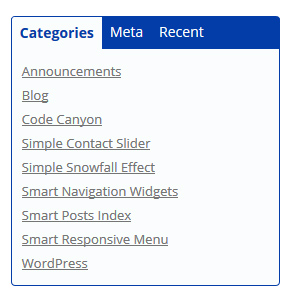


Note that you should only use the tag for its intended purpose (to cite a quotation).
Tabbers can be created by using the following basic syntax:Here is some food for thought: If our experience is limited to a small part of a larger reality, it is only reasonable to assume that beyond the limit of our possible knowing there may well exist a host of phenomena, interactions, relationships, and ordered happenings upon which our reality and existence profoundly depends, but of which we cannot directly perceive. Tabber is a way to separate content into tabs, when only one tab is displayed at a time and tab labels are used to navigate between the different tabs. If our experience is limited to a small part of a larger reality, it is only reasonable to assume that beyond the limit of our possible knowing there may well exist a host of phenomena, interactions, relationships, and ordered happenings upon which our reality and existence profoundly depends, but of which we cannot directly perceive. Although not technically a "tab", browsers usually indent content that's enclosed inside the element, thus resulting in a "tabbed" appearance. If you are presenting a quote from another source, you should use the tag. Note that browsers usually display text using a fixed-width font (such as Courier), but you can use CSS to change this as you see fit. Because these are all enclosed inside tags, the browser displays it exactly as it was entered. In this example, I simply added spaces using my keyboard's spacebar and tabs using my keyboard's tab key. This means that the content will appear in the browser just the way you entered it. You can use the tag to display content that is preformatted. As you can see, the end result is the same. This example uses the entity names to display the various spaces. Here's how you use the HTML entity number to display the various spaces. Here are examples of using special characters to create a tabbed effect. Here's an example of using padding-left to create a horizontal tab. Here's an example of using margin-left to create a horizontal tab. In particular, the margin-left and padding-left can acheive a "tabbed" effect. Using CSS for your horizontal tabs allows you more control over how your tabs appear to your users. Therefore, we are reliant upon using either some other HTML element, Cascading Style Sheets (CSS), or a special character to create a horizontal tab. Seeing as HTML hasn't had a "tab" element since HTML 3, and browser support for this element was virtually non-existant anyway, we can't use the "tab" element.
HTML TABBER CODE
This page contains HTML code for adding a horizontal tab within the text of your website or blog.


 0 kommentar(er)
0 kommentar(er)
